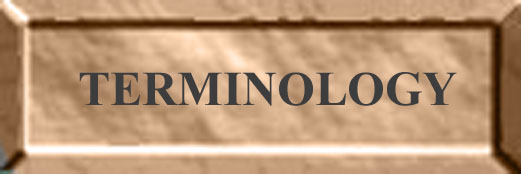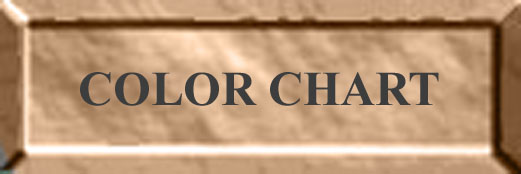THE 16 BASIC COLOR COMBINATIONS
Aussies come in 16 basic color combinations based on body color
(red or black), presence or absence of tan points (copper), and
presence or absence of white trim. Within this matrix of 16 basic
possibilities there is room for considerable individual variation.
|
Self Black
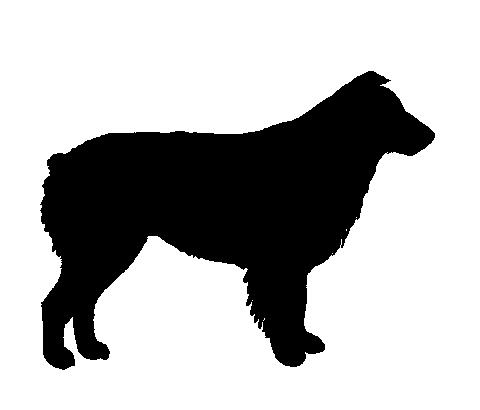
|
Black and Tan
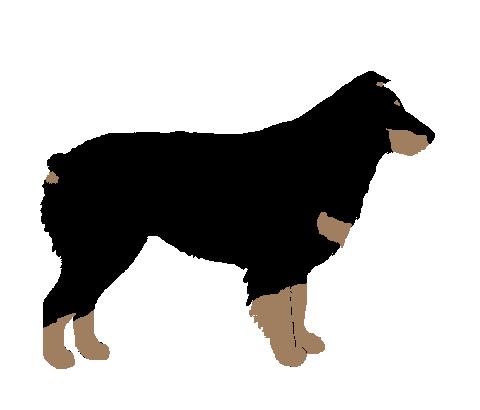
|
Black Bicolor

|
Black Tricolor

|
|
Self Red
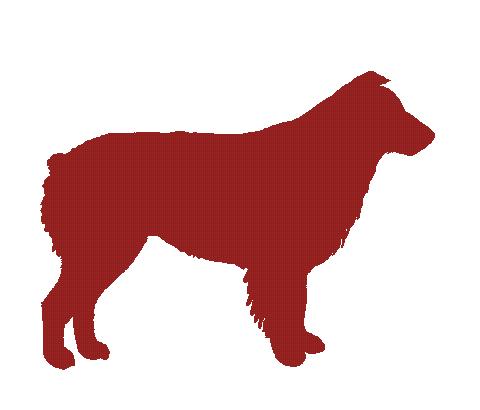
|
Red and Tan
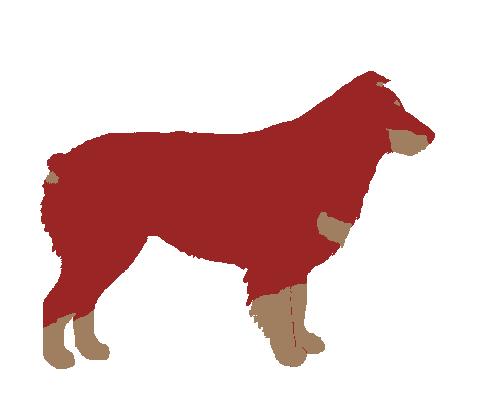
|
Red Bicolor
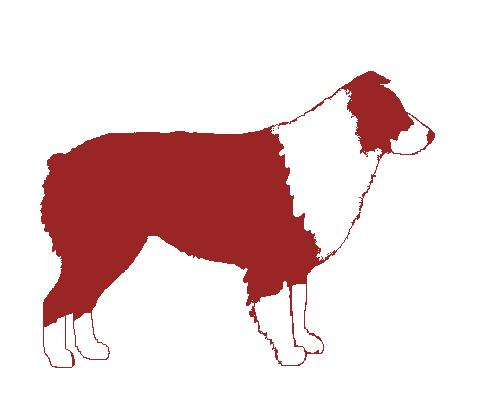
|
Red Tricolor
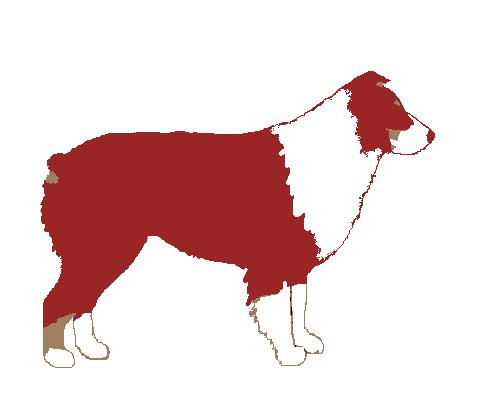
|
|
Self Blue Merle

|
Blue Merle & Tan
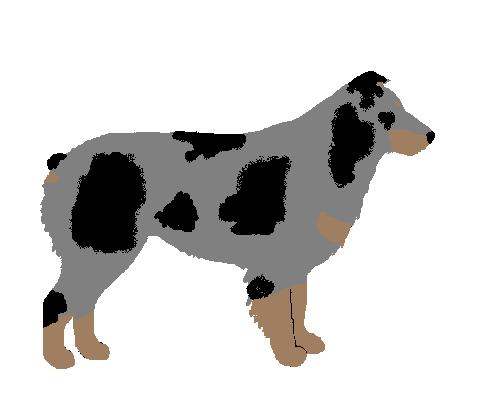
|
Blue Merle & White

|
BM w/White&Tan

|
|
Self Red Merle

|
Red Merle & Tan
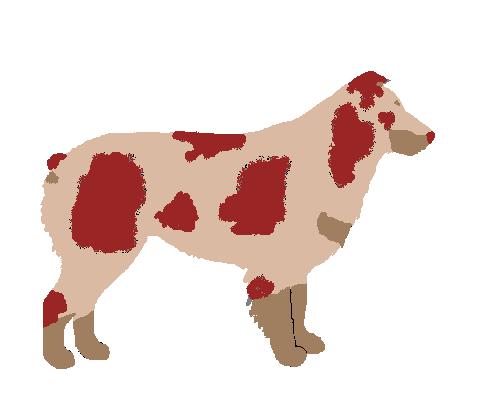
|
Red Merle & White
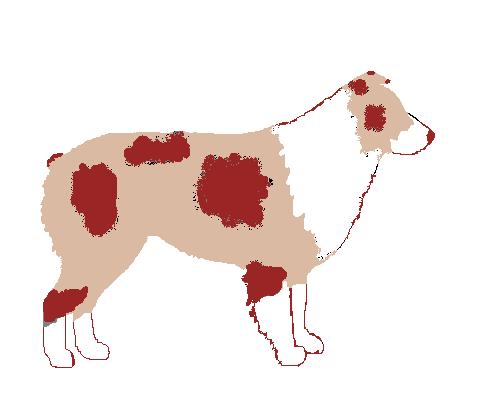
|
RM w/White&Tan
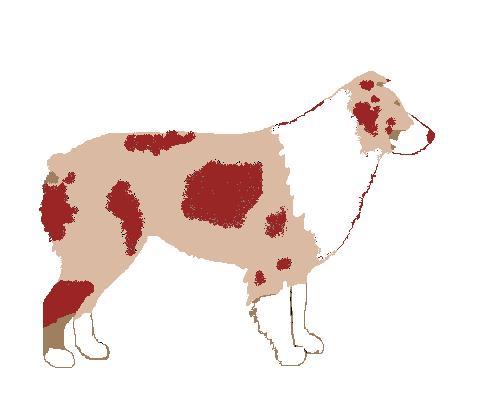
|
A dog that is only one color (or only merle) with no white
trim or tan point pattern is called a self color. If he is black,
he's a self black. A dog that is a merle with no trim would be
called a self blue merle or a self red merle. Dogs with tan points
but no white spotting pattern are "body color" and tan
(ex. black and tan). Dogs with a white spotting pattern but no
tan points have in recent years been referred to as bicolors (body
color plus bi), but to avoid confusion it would seem more logical
to refer to them as black and white, red merle and white, etc,
to specify what two colors one means. A dog with both tan points
and a white spotting pattern is commonly referred to as a tricolor.
With merles using the "bi" and "tri" terminology
becomes clumsy. A normal blue merle with only one trim color,
such as white, is already three colors, and a blue merle with
both tan points and white trim is already four colors. Bicolor
and tricolor just don't fit. It would make more sense to simply
say "blue merle" and elaborate on trim color if asked.
© 1999-2009 Lisa McDonald Comments

